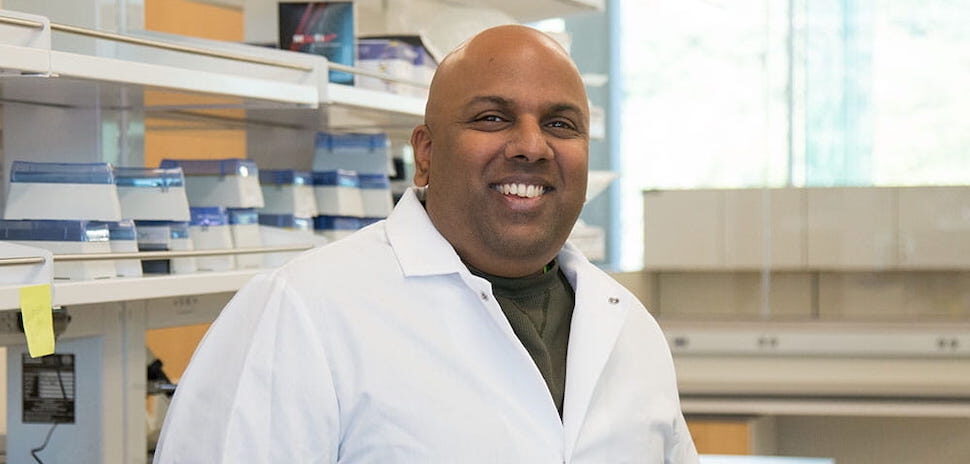Last fall, we updated you on what’s driving the North Texas biotech boom, offering “snapshot” insights from real estate services firm JLL. Now that spring has sprung, a new report from Dallas-based commercial real estate giant CBRE shows that the region is among the top U.S. markets in life sciences growth, despite headwinds from a slowing economy.
CBRE’s report names Dallas-Fort Worth as “a top emerging life sciences market in terms of size, institutions, talent, and rapid growth, alongside Nashville and Atlanta.”
26,000 new life sciences workers in DFW since 2019
North Texas’ total life sciences labor pool has increased by 17% (26,000 workers) since 2019, surpassing the average national growth of 13.7%. Research & development employment in DFW has increased 44.5% since 2019, behind only New Haven, Connecticut (94.2%) and Nashville, Tennessee (81%).
CBRE notes that DFW’s life sciences ecosystem is supported by UT Southwestern Medical Center in Dallas and the University of North Texas Health Sciences Center in Fort Worth, “which helped produce the national’s 10th greatest number of biological and biomedical sciences graduates in 2022.”
‘DFW has all of the pieces’: Including $1.6B in life sciences VC funding from 2018 to 2022
“DFW has all of the pieces assembled to become a dominant force in the life sciences sector,” Chelsea Story, VP with CBRE’s Life Sciences practice in Dallas, said in a statement.
“Our region attracted $1.6 billion in life sciences venture capital funding between 2018 and 2022, and the only limitation we have is the demand for life sciences facilities outpacing supply,” Story added. “Life sciences companies want to be in DFW and utilize our growing talent, and as developers continue to build and deliver new space, the sector will continue to grow.”
Nationwide, life sciences industry is “proving resilient” amid a slowing economy
Nationwide, the life sciences industry is “proving resilient during the current economic slowdown,” the report says—and so is the real estate that houses it.
CBRE forecasts that “cumulative square footage of lab space in the largest 13 U.S. life sciences markets, already having expanded by 47% in the past five years, will increase by another 22% within the next two years to 220 million square feet as projects currently under construction are completed. Nearly a third of that space under construction is pre-leased.”
Banking turmoil causing some turbulence
VC funding in 2023 for life sciences startups and tech companies is likely to be hampered by recent turmoil in the banking sector, CBRE says. IPOs by life sciences companies “have fallen off” and job growth nationwide for life sciences professions slowed to a 4.1% gain in January 2023 from 6.4% a year prior. Additionally, U.S. lab vacancy rose to 5.7% in Q4 2022 from 5.1% in the Q3, “though it remains low relative to many other real estate sectors.”
Clinical trials on the rise nationally and globally
Drug discovery and development looks to be a solid growth area for life sciences. Globally, the number of clinical trials increased to 444,567 by March 2023, up 36% from 2020, according to the U.S. National Library of Medicine.
In the U.S. market, “the number of new Phase 2 and 3 clinical trials—when life sciences companies most often expand their operations—ramped up over the past decade to exceed 3,000 in each of the past three years,” CBRE notes.
“The life sciences industry and the broader economy have hit choppy waters in recent months, but the industry’s most important gauge—the product pipeline—signals sustained, underlying growth,” Matt Gardner, CBRE’s Americas life sciences leader, said in the statement. “Many metrics have receded from their 2020 and 2021 highs, but they’re still above their pre-pandemic levels. There is a lot of promising science in the works to propel this industry forward once the lending environment settles.”
Funding from NIH keeps upward pace
Annual funding from the National Institutes of Health “has risen by 62% in the past decade, including an increase to $47.5 billion this year from $45.2 billion last,” CBRE says.
Cumulatively, U.S. life sciences companies “had $200 billion in cash reserves last year, a decline from the previous three years but still higher than 2018 and before. That capital could be a resource for mergers and acquisitions of smaller biotech companies,” CBRE notes.
You can view CBRE’s full report by going here.
![]()
Get on the list.
Dallas Innovates, every day.
Sign up to keep your eye on what’s new and next in Dallas-Fort Worth, every day.

































